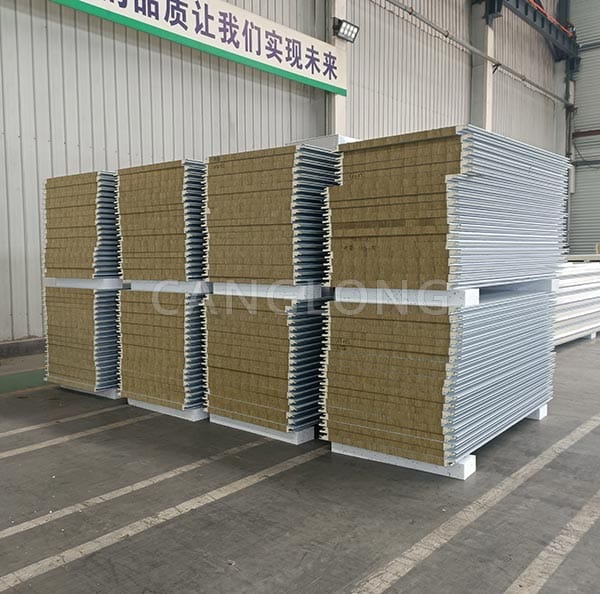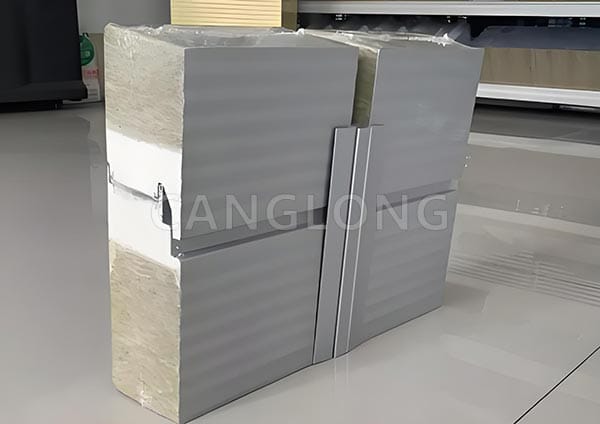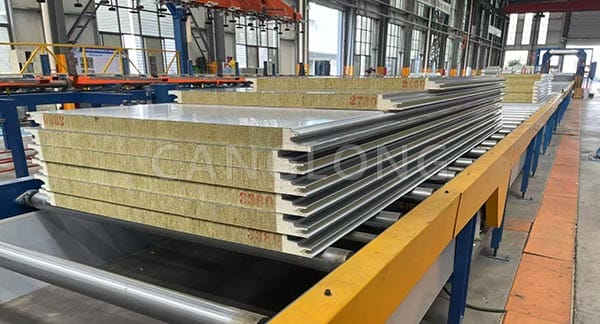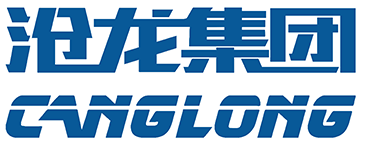How to install the exterior wall panels of steel structure warehouse?
The core requirements of exterior wall panels for steel structure warehouses are efficient installation, long-term weather resistance, and comprehensive performance adaptation. Polyurethane edge-sealed rock wool boards have become a popular choice for industrial storage projects due to their composite design of rock wool insulation and polyurethane protection. The following is an explanation from three aspects: installation process, typical overlap methods and advantages comparison, and material property adaptability, to provide users with technical reference.

1. Core process of exterior wall panels installation of steel structure warehouse
The installation of exterior wall panels (polyurethane edge-sealed rock wool panels) of steel structure warehouses needs to fit closely with the characteristics of the main body of the steel structure. The core steps are as follows:
Base treatment: Confirm the verticality (deviation ≤3mm) and flatness (deviation ≤2mm) of the steel structure skeleton, clean the surface oil/rust, and ensure that the keel (usually C-shaped steel or square tube) is firmly installed, and the spacing matches the width of the board (conventionally 600-1200mm).
Keel fixing: Use galvanized self-tapping screws (or stainless steel screws) to connect the keel to the main body of the steel structure, with a spacing of ≤600mm. If the project is located in a high wind pressure area (such as the coast), it is necessary to increase the diagonal brace or strengthen the keel density.
Pre-arrangement of boards: Calculate the length of the board according to the height and span of the warehouse, and reserve 5%-8% thermal expansion and contraction expansion joints (8%-10% is recommended in tropical/temperature difference areas) to avoid deformation in the later stage.
Board installation: Lay one by one from the bottom to the top, using mechanical fixing and sealing treatment:
- Mechanical fixing: Use special fasteners (such as waterproof self-drilling screws) to penetrate the rock wool layer and fix it to the keel, with a screw spacing of ≤500mm and an edge of ≤300mm to ensure that the board fits tightly with the keel.
- Sealing treatment: Fill the board seams with polyurethane foam or silicone sealant (weather-resistant type), and apply a waterproof and breathable membrane (optional) to prevent rainwater penetration.
2. Commonly used overlap methods and advantages comparison
For different climate zones, such as rainy Southeast Asia, high wind pressure in the Middle East, and large temperature difference in North America. Polyurethane edge-sealed rock wool panel has a variety of overlap schemes, and the core differences arewaterproof performance, wind resistance, and construction efficiency. The details are as follows:
| Overlap Method | Process Features | Applicable Scenarios | Core Advantages |
|---|---|---|---|
| Flush Overlap | Panel edges are aligned, fixed directly to purlins via self-tapping screws, with joints sealed with sealant. | Mild climate zones (e.g., European temperate regions, parts of South America) with moderate waterproofing requirements for small-to-medium warehouses. | Simple installation, low cost, ideal for rapid delivery; neat panel edges for easy maintenance. |
| Tongue-and-Groove Overlap | One panel edge features a 5-10mm deep groove, while the opposite edge has a matching protrusion. Installation interlocks the groove and protrusion, forming a “maze-like” waterproof structure, reinforced with sealant. | Rainy/humid regions (e.g., Southeast Asia, African tropics) or coastal high-salt-fog environments (e.g., Gulf of Mexico, Middle East). | Blocks direct water infiltration, improving waterproofing by 30%-50%; groove interlocking enhances wind uplift resistance (up to Class 12 wind resistance). |
| Slot-and-Groove Overlap | Panels are pre-equipped with metal slots (aluminum or galvanized steel) at the top/bottom. Installation uses slot-and-groove interlocking to reduce screw count, with joints closed using elastic sealing strips. | Large-span warehouses (span >30m) or areas requiring frequent disassembly (e.g., temporary bonded warehouses in bonded zones). | Reduces on-site drilling, improving installation efficiency by 20%-30%; adjustable slots accommodate minor steel framework deformation (e.g., thermal expansion/contraction). |

3. The adaptability advantage of polyurethane edge-sealed rock wool board as the exterior wall panels of steel structure warehouse
Compared with traditional color steel plate and single rock wool board, polyurethane edge-sealed rock wool panel has four core advantages in industrial storage scenes, which accurately matches the high strength, long life, and easy maintenance requirements of steel structure warehouses.
Balance between insulation and fire protection: The thermal conductivity of rock wool core material is ≤0.040W/(m·K) (in accordance with EN 13162 standard), which meets the insulation requirements of warehouses in most countries around the world. At the same time, rock wool itself is an A1-level non-combustible material, and with polyurethane edge sealing (B1-level flame retardant), the overall fireproof performance reaches GB 8624-2012 A-level (EU EN 13501-1 B1-level), which is suitable for Europe, America, the Middle East and other regions with strict fire protection requirements for industrial buildings.
Weather resistance enhancement: The polyurethane edge sealing layer (thickness ≥1.5mm) wraps the edge of the rock wool to block the intrusion of water vapor. The water absorption rate of traditional rock wool board is >1kg/m², which can be reduced to <0.1kg/m² after edge sealing. With double-sided lamination (PE or aluminum foil), it is resistant to salt spray corrosion (salt spray test ≥1000h) and UV resistance (UV aging 500h without cracking). In harsh environments such as coastal high humidity and tropical exposure, the service life can reach more than 25 years (ordinary rock wool board is only 10-15 years).
Lightweight and high strength synergy: The density of rock wool core material is 100-120kg/m³, which is only 1/50 of concrete. With 0.5mm thick aluminum-zinc steel plate, the yield strength is ≥275MPa, the overall weight is ≤25kg/m², which is only 1/10 of the concrete wall, greatly reducing the load on the steel structure. At the same time, the impact resistance of the plate is ≥10J (EN 12602 standard), which can withstand the impact of gravel carried by tropical storms.
Installation flexibility: supports a variety of overlap schemes, adapts to different steel structure keel spacing (600-1200mm adjustable), and the plate size can be customized (conventional width 950mm, 1150mm, length ≤12m), reducing on-site cutting losses, meeting the dual needs of international engineering for standardization and customization.

Summary
For steel structure warehouse projects, polyurethane edge-sealed rock wool panel has become the preferred solution that takes into account both economy and reliability through composite protection, flexible overlap, and comprehensive performance adaptation. Its core value lies not only in meeting the needs of foundation enclosure, but also in solving the pain points in complex environments such as tropical and coastal areas through targeted design (such as wind resistance, salt spray resistance, and long life), helping Chinese building materials to establish a reputation for both technology and services in the global industrial infrastructure market.
